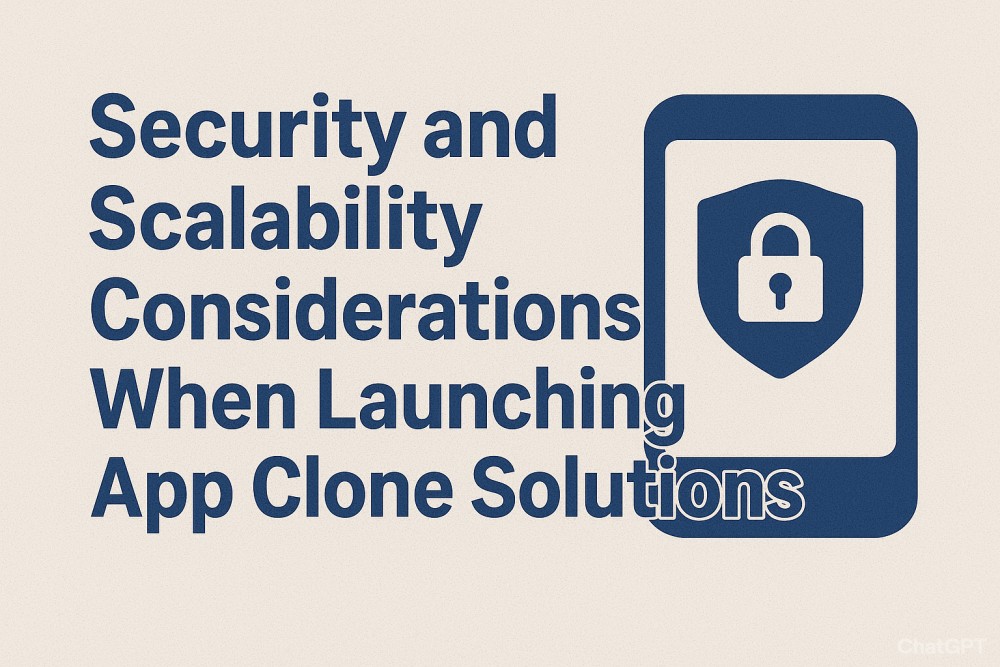App Clone solutions have emerged as the preferred quick fix for startups keen to enter thriving markets. They’re faster, cheaper and already tested in the real world. However, the reality is that launching swiftly is just part of the whole narrative. If your clone app lacks security and cannot manage expansion, you’re constructing on unstable foundations. Incorporating fresh tools, such as those developed through generative AI in cybersecurity, can provide clone apps with a significant advantage in protecting against sophisticated attacks. Security earns trust, and scalability ensures survival. Miss either, and the shortcut turns into a dead end.
Why Security Deserves More Attention
Users today aren’t naive. One whiff of weak security and they’ll uninstall your app in seconds. In fact, most people assume data protection is a given but you only hear from them when something goes wrong. And in industries like fintech or healthcare, even one breach can be enough to wipe out years of effort.
The tricky part? Numerous clone applications depend on existing frameworks. Although practical, they may harbor concealed weaknesses. Think of it like buying a second-hand car, it might look shiny, but unless you check under the hood, you don’t know what’s waiting. This is why auditing the core code and guaranteeing consistent updates is the first step, not a secondary consideration.
Making Security Part of the App’s DNA
Effective security isn’t a characteristic you “attach afterwards.” It must be incorporated from the very start. This involves strong encryption, two-factor or multi-factor authentication, and ongoing vulnerability assessment. Regulatory compliance (like GDPR, HIPAA, or PCI DSS) is not merely bureaucratic hurdles; it conveys to users that they can trust you with their information.
APIs deserve special mention here. Clone apps often thrive on third-party integrations, but those APIs can become unlocked side doors if left unchecked. Using token-based authentication, monitoring traffic, and setting limits are simple steps that stop big problems before they start.
Don’t Forget the Human Factor
Oddly enough, some of the biggest risks don’t come from hackers but they come from people on the inside. A careless employee who reuses weak passwords, or a developer who skips secure coding practices, can cause just as much damage as a cyberattack. Training, awareness, and even basic practices like password hygiene are more important than many companies acknowledge. Users require assistance, transparent privacy policies, and discreet reminders to refresh their credentials, fostering trust in ways that technology alone cannot achieve.
Scalability: Preparing for the “What If”
Imagine this, your app replica unexpectedly becomes a sensation. Numerous registrations arrive overnight. Exciting? Absolutely. But if your servers crumble under the weight, users won’t stick around to congratulate you but they’ll be gone in a click. Scalability emphasizes making certain that your application can grow without breaking under pressure.
Thanks to modern cloud platforms like AWS, Google Cloud or Azure, scaling resources has never been easier. You can start small and expand as demand grows. However, the true secret is found in the structure. A quick-to-launch monolithic app may work fine at first, but as usage spikes, it’s like trying to squeeze a growing business into a studio apartment. A microservices architecture, while requiring more initial work, allows each component of your application to grow separately.
Cost vs. Foresight
Many startups hesitate to invest in scalable setups early on because why pay for capacity you don’t need yet? But here’s the kicker: retrofitting scalability later usually costs more and causes more headaches. Cloud-native “pay as you grow” models offer a smarter middle ground. It’s similar to purchasing a home you can develop, rather than relocating each time the family increases.
Where Security Meets Scalability
It’s simple to consider security and scalability as two distinct criteria to fulfill, but in reality, they intersect. A scalable application can manage unforeseen spikes in traffic, whether from real growth or a DDoS attack. Tools intended for scaling can also function as early-warning systems for detecting suspicious activities. In other words, building for one often strengthens the other.
The Entrepreneur’s Advantage
Here’s the opportunity: while many startups rush to launch with speed as their only focus, the ones who bake in security and scalability earn something money can’t buy, that is trust. Investors notice it, users feel it, and competitors envy it. An app that doesn’t just “work” but works safely and consistently is the one that lasts beyond the hype cycle.
Looking Ahead
The future of app clones will push this even further. Through AI-driven monitoring, anticipatory scaling and enhanced encryption, the tools improve yearly. Entrepreneurs that prioritize security and scalability as fundamental elements of their strategy, rather than mere checklist items, will be the ones at the forefront, instead of trailing behind.
Conclusion
Creating an app replica can conserve time and resources, yet neglecting security and scalability is akin to constructing a skyscraper without strengthening the base. Ultimately, defects will become apparent. Nail these two pillars and your app will be more than just a replica but it’ll be a durable contender.
